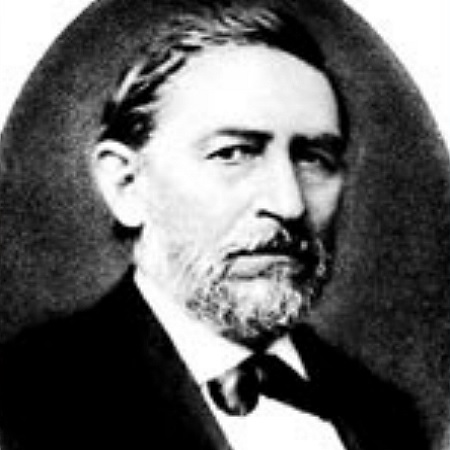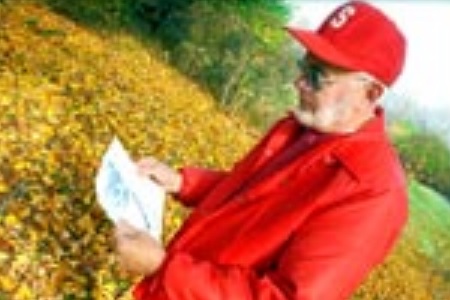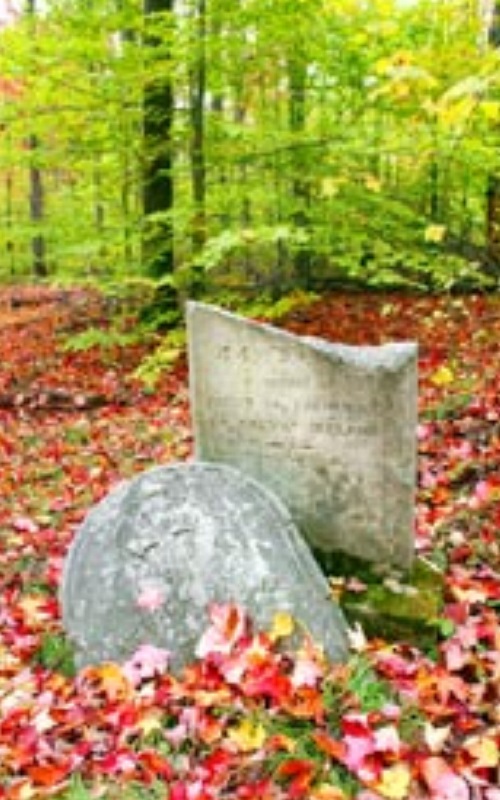Cover Story
Celestia, Barclay, Laquin, Centralia… A journey to Pennsylvania places that have disappeared, or are just about to.
On Sept. 27, 1850, Peter Edward Armstrong and his wife, Hannah, plunked down $450 for a 181-acre spread along the Pole Bridge Run in the Endless Mountains of North Central Pennsylvania.
This was no mere summer retreat from the soot and congestion of Philadelphia, where they owned a paper store.
Armstrong, who also served as a traveling tin salesman, was caught up in the religious fervor of the times. A disciple of William Miller, who predicted the world would end on Oct. 22, 1844, Armstrong found a nook in the woods during one of his sales trips that he thought would be perfect for the eventual return to earth of Jesus Christ.

Though the end times did not come as Miller predicted, embarrassing the Millerites, Armstrong remained a true believer, convinced that Armageddon was approaching and that Christ would return only to a purified community deep in the woods, far from the moral contamination of his hometown.
With that purchase and several others, Armstrong created the town of Celestia, in Sullivan County. To maintain the land’s purity, Armstrong deeded it to God. It was to be a religious utopia, paving the way for a Second Coming, or advent. Armstrong’s religion was a close relative of the Seventh-day Adventists, Philadelphia Mayor John Street’s denomination.
“Believers should not waste their time and efforts fixing dates,” Armstrong wrote in The Day Star of Zion, a newspaper he published in Celestia, according to historian D. Wayne Bender, who wrote a pamphlet called From Wilderness to Wilderness: Celestia. “Rather, Christ’s command was to prepare him a house and watch in readiness for His return.”
That never happened. Today, more than 150 years after Armstrong’s initial investment, Celestia is a ghost town, one of a dozen or so once-thriving communities scattered across Pennsylvania that, for many reasons, died suddenly, often leaving behind little more than stones and bones and spirits of the past.
And so it is, on a cold, dark morning in late October, nearly 158 years to the day that Jesus Christ was supposed to return to earth, a little gray Honda rumbles northwest, toward the Endless Mountains, its occupants in search of what happened to Armstrong’s vision and to other Pennsylvania ghost towns like Barclay and Laquin and of course, Centralia, most of whose residents fled an underground fire that has been burning for 40 years.
It is just past dawn and blood and guts are splashed all over Highway 80, the remnants of a deer that had an unhappy rendezvous with a speeding semi.
“An omen,” I say, joking with photographer Michael Regan. “Maybe Peter Armstrong doesn’t want us to come.”
A few miles later, there is another omen, in the form of a tractor-trailer whose driver tries to turn into the left lane, heedless of the fact that we are there and that two solid objects cannot occupy the same space at the same time.
The hulking truck sways side to side, almost tipping over on top of us.
“Man, that is the closest I came to dying in a car,” says Regan.
A short time later, as we turn off the interstate onto a winding, twisting country lane called Route 42, Regan comes closer still. The sound of tires squealing against pavement is followed up by the loud thud of car slamming into car.
No one is injured, but the car that hit Regan’s does not move and has to be towed. Regan’s Honda sustains a nasty bash in the left rear quarter panel, but is drivable.
Eighteen inches to the left and Regan and I would be dead or seriously mangled. Though a local gendarme blames the accident on Regan, we are quite fortunate, able to walk away.
“Maybe that is the omen,” I say to Regan as we are allowed to make our merry way north, to our meeting with Vivian McCarty, the executive director of the Endless Mountains Historical Society. She’s still waiting for us, we hope, at a diner in the town of Muncy Valley, one of the many small burgs neighboring Celestia that have managed to hang on over the years of depleted natural resources, dying industries, horrific floods and wave after wave of pestilence.
I call the diner and leave a message.
“We’ve been in an accident,” I tell the waitress who answers the phone, my last call before we motor into a vast cellular-phone dead zone. “We’re all right and on our way.”
About 45 minutes later, haggard and still a bit shaken, we are instantly recognizable upon our arrival at the Vales diner as the visitors from Philadelphia who have come to find Celestia.
Vivian McCarty, a loquacious dumpling of a grandmom, smiles warmly and quickly downs the rest of her coffee before driving us over to the historical society, a dozen-odd miles away in Laporte, where a historian named Wilson Ferguson is waiting to give us a tour.
“Call me Secretary,” says the tall, white-haired Ferguson as he enters the society’s main hall.
A retired professor of history at the University of the Arts and, later, Russell Sage College in Troy, N.Y., he possesses an eerily intimate knowledge of how this region developed.
“And what I don’t know, I make up,” he says, laughing.
Before departing for what is left of Celestia, Ferguson shows off some of its relics: badly weathered copies of The Day Star of Zion; Armstrong’s large, silver mug; a couple of paintings of the town the way it was at its zenith; and maps of what was and what was supposed to be.
“You see these buildings?” he asks, pointing first to the picture, then to the map. “Armstrong named all his streets after streets in Philadelphia. There’s Pine. There’s Chestnut. Front, Second and Third.”
It’s nearly 11 a.m. Anxious to see what attracted Armstrong to this far-off land of hills and dales, I ask Ferguson and McCarty if they can take us to see Celestia’s remains.
Ferguson hops in his ’62 Buick Impala convertible, a cream-colored creampuff whose only blemish is the missing rear plastic window. It is by far the best-preserved artifact we will see this day.
As we cruise down 42, Vivian McCarty talks. She talks about history. She talks about the grant money she has wrangled to help tell the stories of the four counties in which the Endless Mountains lie. And she talks about how she has just purchased the farm she grew up in, which will become an inter-generational home for many of her six children and 17 grandchildren — a scenario not too unlike Celestia, she notes.
Arriving, finally, at Celestia, we find to everyone’s surprise that we are not alone. A car bearing N.Y. plates is parked in the lot, which, along with a good portion of what’s left of Celestia, is owned by the historical society.
Ferguson, almost suspicious, springs out of his car and walks briskly to the town, which, to the untrained eye, looks merely like two intersecting, damp-leaf-covered paths.
“That’s Pine Street,” says Ferguson, who is a very spry 69 and several paces ahead of us. He explains that we have come to the intersection of Pine and Front, the main drag of what was once a semi-thriving community, anchored by Hannah Armstrong’s general store.

“Funny thing is, she didn’t even believe in what her husband believed in,” he says, hinting strongly that, if not for Hannah’s business acumen, Celestia would not have lasted even as long as it did.
“At one time, this was the only way to get from one end of the county to the other,” says Ferguson. “Travelers would stop at the store to rest and purchase supplies and get a lemonade or something like that.”
The visitors from New York, as surprised to see us as we are to see them, amble over and listen to Wilson Ferguson’s tales of yore.
In the beginning (of Celestia, anyway), publicity garnered through Armstrong’s newspaper, dedicated to “encourage people to come to Celestia and solicit funds for the temple,” infused the new town with bodies and cash.
But while Peter Armstrong had grandiose plans to build a nine-square-block community with a massive tabernacle dedicated to Jesus as its centerpiece, events began to intrude on Armstrong’s dream. It is unclear how many people lived in Celestia during the town’s peak. But with only about a dozen structures built, including a couple of bunkhouses, it is unlikely there were ever more than 100 people there — far fewer than the 144,000 Armstrong envisioned filling his tabernacle to await the advent.
As Ferguson explains the design of the town, I peruse a copy of D. Wayne Bender’s pamphlet, given to me by Vivian McCarty. Bender states that in 1864, when the Civil War broke out, the first Celestian was drafted. Armstrong wrote a letter to President Lincoln, asking that the Celestian not be drafted, for religious reasons. Lincoln, though a busy man, wrote back to Armstrong approving his request.
To further deflect attempts to draft his people, Armstrong got creative, first appealing for independence from Pennsylvania and then deeding center Celestia to “Almighty God, who inhabiteth Eternity, and to his heirs in Jesus Messiah.”
By turning the land over to God and His Son, Armstrong thought he could not only keep his people out of the War Between the States, he could avoid paying property taxes as well.
No such luck, Ferguson tells us.
Eventually, the county wanted its taxes. Sometime around 1876, according to Bender, the Sullivan County Treasurer’s office came calling for its money.
Armstrong refused to pay.
A sheriff then came to drive off a flock of Celestia’s sheep. Armstrong gathered his people and told them he would deliver a miracle: The sheep would not follow the sheriff.
But they did. And that, according to Bender, was the beginning of the end of Celestia.
“Now, they would be considered a 501(c)(3) and they would have been OK,” says Ferguson. “But back in the 1870s, they didn’t have those.” He adds that Armstrong was forced to sell the land to his son. Within the past year, Armstrong’s descendants tried to sell the land off for development — until a local lumber company stepped in, purchased the land and turned a big slice of it over to the historical society.
When Ferguson finishes talking, I ask the woman from New York what she thinks about visiting Celestia.
“I look around and stop and listen; I can almost hear the people,” says the woman, who introduces herself as Pam Buck of Endicott. “I don’t know if you would call it ghosts, but anytime you are in a place like this, you can feel the history all around you.”
On June 20, 1887, 69-year-old Peter Edward Armstrong died. And so did the dream of Celestia.
Wilson Ferguson has one more place to show us at Celestia, before we break off for lunch and then a visit to the area’s other ghost towns, Barclay and Laquin.
Tromping through the woods, he takes us to Celestial Lake, with its ancient beaver mound and an uprooted tree on the shore with bricks in its roots.
“See those bricks? It is believed that Armstrong was going to use them to build the tabernacle. But it never got built, so you have these bricks, which were made in town, all over the place.”
Picking up one red brick and one yellow brick for posterity, I follow Ferguson back out to the road, through the thickets of fallen stumps and bramble bushes.
A famished crew, we opt to drive to the lovely little town of Dushore for lunch at a place called the Whistle Stop. It is across the street from the local newspaper, The Sullivan Review, or “The Sully” as it is known to county residents, and cater-corner to Tubach’s furniture and undertaking store.
“All the undertakers up here make furniture,” Ferguson says with a sly smile.
Over the juiciest of burgers, Ferguson whets our appetite for adventure with descriptions of our next ghost town encounters.
There is not much left to the town of Barclay, he says, except for the cemetery. A wonderful cemetery, adds Ferguson, who, among other things, has mapped all of the region’s many burial plots.
And Laquin?
“There might be a few foundations, but all that’s really left is a guy who calls himself the mayor of Laquin. He’s a real character. Keeps a bobcat and a cougar as pets.”
“A bobcat and cougar?” I ask, incredulously, as Ferguson excuses himself to leave for an appointment.
“How long will it take us to get there?” I ask before he leaves.
A while, as it turns out.
It’s a bit of a haul to Barclay, which was built up on Barclay Mountain about 45 minutes away.
Driving past farmsteads large and small, Vivian McCarty regales us with tales of local politics, including the big fight over turning the former Red Fox restaurant into a strip club called “Foxxy Tails.”
The way we were: In its heyday, Laquin was a thriving logging town. Only a few foundation stones remain.
It all started when an escaped convict took hostages at the restaurant.
“Nobody wanted to eat there after that,” she says.
Eventually, the vacant eatery was sold to an out-of-towner with an interest in T and A.
“Tore up the county,” says McCarty. “But people up here don’t believe in zoning, because they feel that they can do what they want, so the place is still here.”
As is Barclay Mountain, an imposing hill McCarty’s station wagon must scale, over dirt and gravel roads. On our way up, we are greeted by one of the biggest vultures I have ever seen. It swoops down over us, so close and menacing that we fear for a little dog being walked by its owner.
“Omen?” Regan asks, pointing in amazement to the big black bird.
As we drive farther up the hill, we see an old man in an orange hat, hunting small game in the woods with a bow and arrow.
“Probably squirrels,” says McCarty.
“What can you do with a squirrel?” I ask, not really expecting to get an answer.
But McCarty is quick to give me a recipe.
“Oh, we cook them up with carrots and peas and make a pot pie,” she says. “Sometimes, we put a pastry top on, sometimes just biscuits.”
Minutes later, she shares her recipe for woodchuck.
“First, you have to remove these little balls from their legs,” she says. “If you don’t the meat is tough. Then you boil them up in baking powder, till it gets all foamy, then you boil it again in baking powder. You want to get rid of that wild gamy taste.”
After making a few wrong turns and running into a local landowner who says he has seen ghosts at the cemetery, we arrive at Barclay. Or what’s left of it.
It is larger than we anticipated. And a very, very sad place.
Barclay came into being shortly after the 19th century’s version of Jed Clampett — a hunter named Absolom Carr — came across an outcropping of coal while shooting at some food in 1812.
Black gold. Pennsylvania tea.
The first thing he knew, old Absolom was out of luck, and mining companies and railroads moved in to extract the coal and move it down the line.
According to a plaque at the cemetery, the 1880 census recorded 2,634 residents, who moved to Barclay from 40 different states and 17 different countries. The town, at its peak one of the largest in the area, had everything a thriving community could want. There were two school districts and a total of six schools. There were three churches — Catholic, Presbyterian and Baptist — and doctors, saloons and transportation.
“In 1872,” states the plaque, “the International Order of Odd Fellows established a lodge at Barclay, which was the largest organization in the county. The people of Barclay and the surrounding communities spent much of their leisure time at the dance hall or at the roller skating rink gliding over the hardwood floors on wooden wheels. A great fondness was held for the picnic grounds where many a day was spent playing baseball, quoit-pitching and enjoying a picnic lunch with friends and family.”
Though it seemed Barclay was thriving, it had its share of misery. There was an outbreak of diphtheria that killed 20 children in the winter of 1884-1885. There was also a smallpox epidemic, fires and many accidents in the mines.
But the final straw for Barclay, according to the plaque, was when the mines ran dry in the mid- to late 1880s. A massive snowfall closed in the remaining mines in 1890 and they never reopened. A flood in 1900 washed away bridges, and that was the end.

Now all that’s left of Barclay is the cemetery.
Covered with a shimmering blanket of red, wet leaves, the gravestones seem to be scattered at random, but a map at the site carefully points out who is buried where.
Perhaps the saddest of all are the gravestones belonging to two children, a 13-year-old boy and his 7-year-old sister, who died a day apart in February of 1872.
With the sky darkening and time running out, it is time to head down the hill toward Laquin to see the remains, but more importantly, to see the mayor and his big cats.
Bouncing over a rutted dirt road, we head toward a holler, and, just as we begin to wonder if we have driven too far, we see a gaudily decorated log cabin, with signs announcing that it is the home of the Murphy family and the mayor of Laquin.
Smoke wafts from the chimney of the one-story cabin, which has a small man-made pond in front, complete with floating duck decoys. But there are no cars in the driveway.
I knock on the door. No answer. Suddenly, I hear a banging at the window and see a sorry-looking one-eyed bobcat pounding its paws at the window and mewling mournfully.
I knock again and there is still no answer. The overgrown tabby pounds on the window again and mewls louder.
Regan and I walk around back and, sure enough, there is the cougar, on its haunches, ready to pounce. Though it is a sad sight, I am glad that the big cat is in a cage.
After Regan clicks off a few shots, we walk back around the front and wait a few minutes, hoping for Mayor Murphy’s quick return. But, just as Peter Armstrong waited for Jesus in vain, our wait for the mayor also fails to pan out. So we hop back in McCarty’s station wagon, somewhat dejected, and head down the road, seeing neither Murphy nor any of Laquin’s other remains.
About 100 yards past the Murphy place, three men are standing outside a house up a hill. We turn around and, uninvited and despite the “No Trespassing” sign, drive up the driveway.
In a flash, two of the men leave. The one remaining is the owner, Frank Abernethy, an affable 82-year-old who lives alone in this home with his chocolate lab Bonnie, a friendly hound prone to sniffing strangers’ crotches.

Abernethy, it turns out, has no phone, but when we tell him we are searching for ancient Laquin, he pulls a pile of papers out of a drawer.
“I just happen to have a little information I’ve collected over the years about Laquin,” he says. He shows us a book called Ghost Lumber Towns of Central Pennsylvania and photocopies of old newspaper pictures of an amazingly bustling town that was still hopping well into the first decade of the 20th century.
But when the lumber ran out, so did Laquin’s luck. Now there is nothing but the mayor’s manse and, we are told, the foundation of an old chemical plant.
“Oh, Bob Murphy,” says Abernethy when I ask him about the cabin up the road. “I know him. Calls himself the mayor or some such.”

Now after 4 p.m., it is time to get back to Regan’s car, still parked in Muncy Valley. We have one final destination: Centralia, the most famous of all Pennsylvania ghost towns.
We bid Abernethy adieu and make the long drive back over Barclay Mountain, through the little town at its base and back onto Route 414.
It has already been a long day and Regan catches a quick nap in the back seat as McCarty launches into a stream-of-consciousness monologue, practically breathing cyclically so as not to have to stop for air. Among other things, she says that while she’s been to Celestia before, she’s never been to either Barclay or Laquin.
I suggest that she and other tourism officials do what they can to improve signage at the ghost towns and string together some kind of comprehensive tour. Considering the troubles we had finding places, random tourists with no guides might never find Barclay or Laquin.
“I know lots of people who would come up here,” Regan chimes in after waking up.
“That’s not a bad idea,” says McCarty and we all joke about ways to bring busloads of spook-fascinated Philadelphians north to Sullivan County.
Just after 5 p.m., we arrive back at the Vales diner. We thank McCarty — who has been a vivacious, gracious host — and say goodbye, pulling out of the Vales, southbound down 42 toward Centralia.
By now the clouds have opened up with a mix of sleet and snow, the weather adding to the overall murkiness of a late autumn afternoon in the Endless Mountains.
Just before 6 p.m., as we head down a curving mountain road into Centralia, we are amazed at what we see — four geysers of steam pouring out of a hill behind the few homes left standing in this once-thriving town. Centralia is now almost completely a ghost town thanks to an underground fire that has been raging ever since some knucklehead burned some trash in a coal pit back in 1962.
As the sleet turns completely into the first snowfall of the season, Regan and I run up to the burning hill, about a few dozen yards from the nearest homes on one side and the St. Ignatius Cemetery on the other.

It is hell here, the end times, the closest thing to a volcano on the East Coast, with plumes of sulfuric steam shooting up from dozens of holes in the earth. As we take in this sight with awe, the swirling clouds of smoke and falling snow forming a surreal tableau, we fail to notice a warning sign that cautions anyone against coming up here because poisonous gases can kill and the ground can open up anytime.
A few of Centralia’s residents have failed to heed the warnings, too.
We knock on the doors of the homes closest to the burning hills, but there is no answer. About 100 yards down the hill, we knock on the door at 411 Trautwine Rd. It is the last structure left on the road, which used to be one of the town’s main thoroughfares. Most everything else in town, including the church and the post office, is long gone, torn down by the government, which has “encouraged” the vast majority of the town — 1,100 residents at its peak — to move.
But not the residents of 411 Trautwine, who answer the door even though it is almost 7 p.m. and well past sundown.
Lamar Mervine, who tells us he is 86, comes to the door and invites us into his home, which he has shared for more than 40 years with his wife, Lana, to whom he’s been married for 62 years.
“I haven’t had any problems,” says Lamar Mervine, whom Lana calls Pop. “I’ve been living in this town all my life. I have no intention of moving.”
“Show him the letters, Pop,” says Lana Mervine, referring to a drawer full of letters, mostly from Columbia County, demanding that the Mervines do what most of their neighbors did long ago and get the hell out.

“We don’t even pay attention to them anymore,” says Lana Mervine with a mischievous grin. “They keep coming and we keep throwing them in the drawer, unopened.”
The Mervines are kind enough to share the letters with me. Some offer the couple the princely sum of $35,000 for their home.
“Where are you going to move with that?” I ask. “Another home in Centralia?” Both Mervines crack up.
“They keep telling us how dangerous the fumes and fire are,” says Lana. “We are scared to death. Don’t we look it?”
Proud to be what county officials derogatorily refer to as “bullheads,” the Mervines boast that they are two of only 15 people remaining in Centralia.
But don’t ask Lana if she’s seen any ghosts in this ghost town.
“Ghosts?” she asks with disdain. “Where are there ghosts?”
Walking out their door, heading back to the little gray Honda that will take us to Philadelphia, I look back at the smoldering hill and can’t help but think there are ghosts all around this nearly dead place.
For more information about these and other ghost towns in Pennsylvania, including Cashtown, Gold Mine and Pithole City, and others throughout the U.S., go to www.ghosttowns.com.


